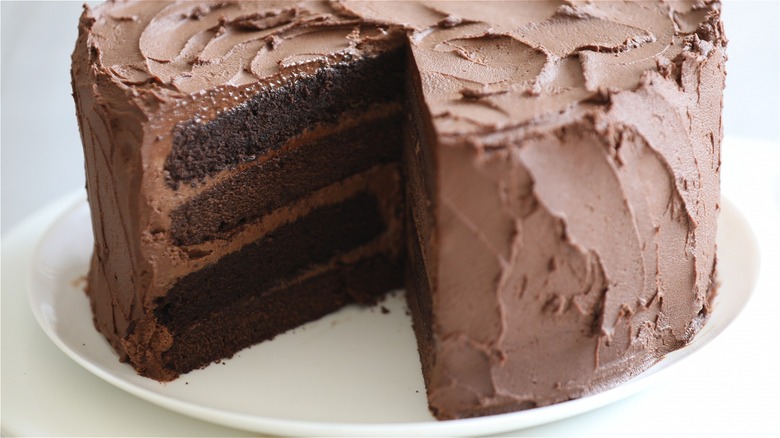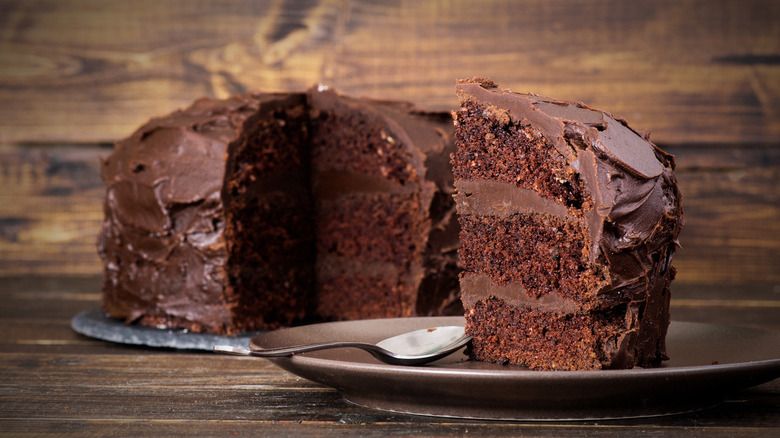Devil's Food Cake Was An Edgy 19th-Century Response To Angel Food Cake
If you want a light, airy cake for snacking that's also relatively low in fat and calories, there's nothing quite like an angel food cake. When made from scratch, this type of cake consists of whipped egg whites, flour, and sugar. Cream of tartar is usually added to the egg whites to keep them nicely whipped and fluffy.
In the baking world, one of the things that makes angel food cake unique is that it doesn't require butter like more decadent cakes. In fact, the lack of butter, and leaving out the egg yolks, yield the angel food cake's heavenly white color and springy texture. The whipped egg whites also help the cake keep its shape, typically that of a tube pan, without using baking powder or soda to make the batter rise.
While the exact origin is unknown, food experts have traced the roots of angel food back to sponge cake recipes printed in cookbooks dating to the 1830s, according to Martha Stewart. Can the constant struggle between good and evil carry over to desserts? Apparently so, because the angel food cake's antithesis was created several decades later.
The creation of the devil's food cake
What we know as devil's food cake today is that it's a rich and indulgent delight with layers of delicious chocolate frosting. Devil's food is darker in color than other types of chocolate cake, so it makes perfect sense that the creation of this scrumptious dessert was in response to the light color of angel food cake. This treat, in fact, was even called "Satan cake" from time to time back in the day, as noted by Cheryl's Cookies. Dark chocolate must be the reason for its diabolical name, right?
When first made during the second half of the 19th century, to goal was simply to create a darkly colored cake in opposition to the white sponge cakes that were so popular in America at the time. Food historians have found that bakers added molasses and spices to the batter to achieve their goal. That's right, the first devil's food cakes weren't chocolatey at all! Cocoa powder was later added to the cake's recipe as a more efficient darkening agent. So, while we often associate devil's food cake with its delicious chocolate flavor, color was the original impetus for this tempting dessert.

